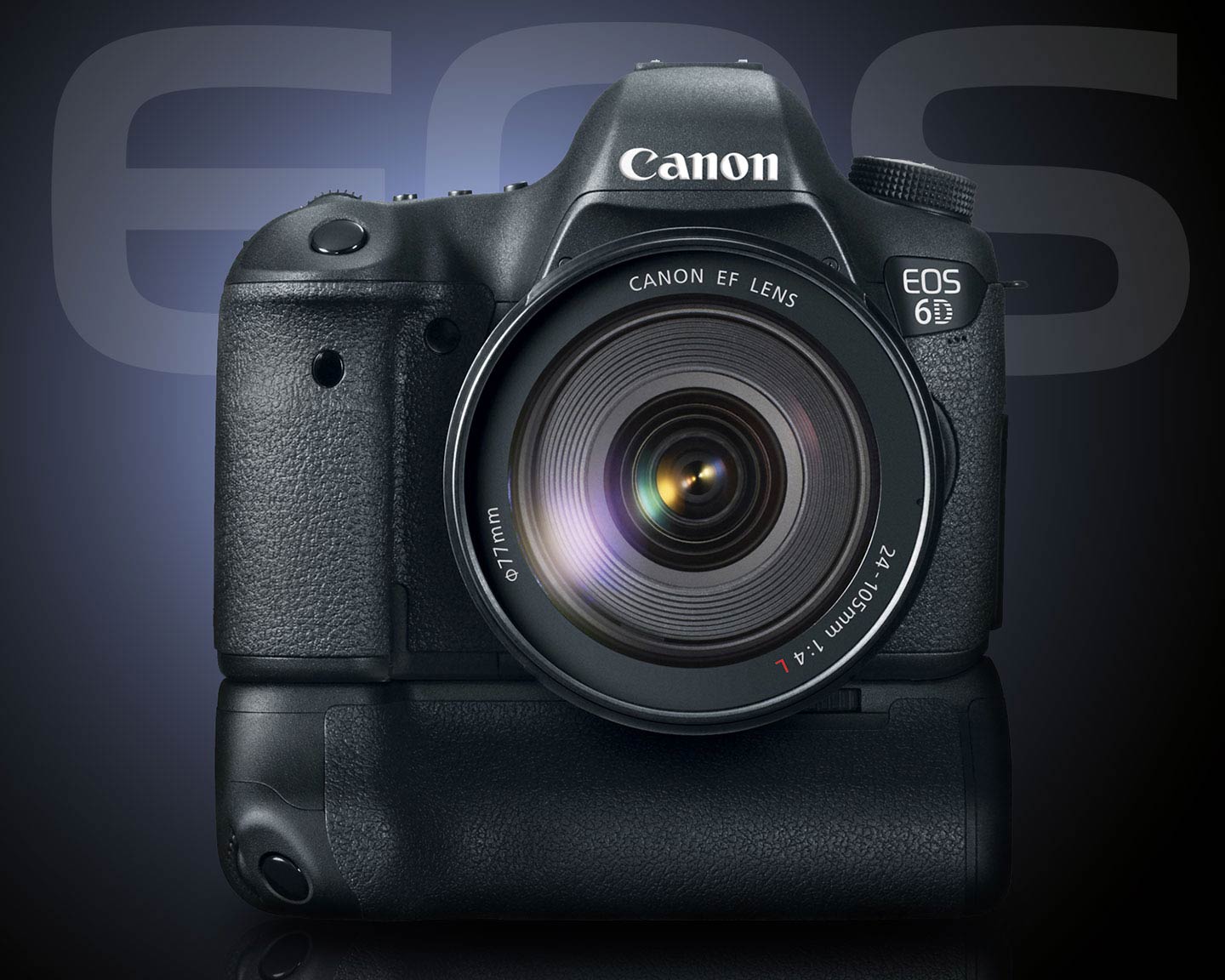This morning, Canon announced the EOS 6D, an “entry-level”, full-frame sensor SLR to fit into its line-up below the 5D series cameras. The camera is built around a newly designed 20 megapixel sensor with an impressive native ISO range, from 100-25,600, expandable to 102,400. The price is currently listed as $1,299.00, virtually identical to that of the recently announced Nikon D600. The 6D is expected to start shipping in October.
Where did Canon skimp to keep the price about $1300 lower than the 5D Mark III? It appears that the major hit was with the focusing system. Instead of the 5D’s awesome 61-point AF smodule, the 6D has an 11-point system (one cross-type), only marginally better than that found in the older 5D Mark II. Canon does claim, however, that it can focus in very low light: -3EV (half the light needed to focus the 5D Mark III). And although the 6D shares the same Digic 5+ processor with the 5D Mark III, the 6D can shoot bursts at only 4.5 frames per second (vs. 6fps in the 5D III). The 6D’s loss of 2 megapixels in resolution is probably negligible, especially considering its remarkable low-light performance compared to the Mark II.
Like the Nikon D600, the Canon 6D’s shutter module is also limited to a top speed of 1/4000th sec, and more disappointingly, an X-sync speed of 1/180th sec, slightly slower than the 5D Mark II.
The body construction of the 6D is also significantly different from earlier full-frame models. Much like the Nikon D600 and D7000, the Canon 6D’s body is partially metal (magnesium alloy) and polycarbonate plastics, allowing it to be smaller and lighter than other full frame models; the body alone weighs 680g (24 oz.), much less than the 5D Mark III (860g, 30.3 oz), and even the APS-C sensor 7D (820g, 29 oz). This robust composite body is also sealed against dust and weather.
There are, of course, other minor differences, too. The 6D accepts SD cards only, there are no slots for Compact Flash. The viewfinder offers about 97% coverage (compared to the Mark IIII’s 100%), but at the same level of magnification.
Canon also made some additions. The Canon 6D is the first EOS SLR to feature built-in GPS tracking to allow easy geo-tagging, and it also has built-in wireless connectivity, also a first in Canon SLRs.
All in all, the camera looks like (mostly) a step up from the 5D Mark II, at a lower cost… not a bad deal. Still, it’s a little hard to swallow paying over $2000 for an “entry-level” camera with shutter speeds matched by the “Rebel” line, and only 11 AF points.




